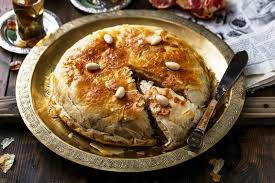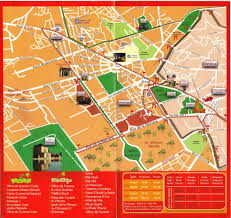The Exquisite Flavours of Morocco: Exploring the Most Popular Moroccan Dishes
Moroccan cuisine is a vibrant tapestry of flavours, aromas, and textures that reflect the country’s diverse cultural influences. From aromatic tagines to fluffy couscous, here are some of the most popular Moroccan dishes that have captured the hearts and palates of food enthusiasts worldwide:
Tagine
Tagine is perhaps the most iconic dish in Moroccan cuisine. This slow-cooked stew takes its name from the earthenware pot in which it is cooked. Tagines can feature a variety of ingredients such as tender meat (often lamb or chicken), vegetables, dried fruits, and a blend of aromatic spices like cumin, cinnamon, and saffron.
Couscous
Couscous is a staple in Moroccan households and is often served on Fridays, the holy day in Islam. This fluffy semolina dish is typically topped with a savoury stew made with vegetables, chickpeas, and meat. The art of steaming couscous to perfection has been passed down through generations.
Pastilla
Pastilla is a sweet and savoury pastry that combines layers of flaky phyllo dough with a filling of shredded chicken or pigeon meat mixed with almonds, eggs, and aromatic spices like cinnamon and powdered sugar. This dish exemplifies the delicate balance of flavours in Moroccan cuisine.
Harira
Harira is a hearty soup that is traditionally enjoyed during Ramadan to break the fast at sunset. This nourishing soup features tomatoes, lentils, chickpeas, herbs, and spices like ginger and cinnamon. Harira is often served with dates and chebakia (sesame cookies).
Moroccan Mint Tea
No culinary journey through Morocco would be complete without sipping on traditional Moroccan mint tea. This refreshing drink combines green tea leaves with fresh mint leaves and sugar to create a sweet yet invigorating beverage that symbolises hospitality in Moroccan culture.
These are just a few examples of the delectable dishes that showcase the rich culinary heritage of Morocco. Whether you’re exploring the bustling markets of Marrakech or savouring a home-cooked meal in a riad, each bite offers a glimpse into the warmth and hospitality for which Morocco is renowned.
Exploring Moroccan Cuisine: Answers to 7 Common Questions About Iconic Dishes and Traditions
- What is a tagine and what are the typical ingredients used in it?
- How is couscous prepared in Moroccan cuisine?
- What is pastilla and what makes it a popular dish in Morocco?
- Can you explain the significance of harira soup in Moroccan culture?
- What are the key spices used in Moroccan cooking?
- Is Moroccan mint tea really a staple drink, and how is it traditionally served?
- Are there any vegetarian or vegan options available in traditional Moroccan cuisine?
What is a tagine and what are the typical ingredients used in it?
A tagine is a traditional Moroccan dish named after the earthenware pot in which it is cooked. This slow-cooked stew features a delightful blend of tender meat (often lamb or chicken), vegetables such as carrots, potatoes, and tomatoes, dried fruits like apricots or prunes, and a medley of aromatic spices including cumin, cinnamon, paprika, and saffron. The unique shape of the tagine pot allows for the ingredients to simmer and meld together, creating a rich and flavourful dish that is synonymous with Moroccan cuisine.
How is couscous prepared in Moroccan cuisine?
In Moroccan cuisine, couscous is prepared with meticulous care and attention to detail, reflecting the deep-rooted traditions of the country. The process begins by steaming coarsely-ground semolina wheat, which is then carefully fluffed to achieve its characteristic light and fluffy texture. This staple dish is often served as a base for a savoury stew made with a medley of vegetables, chickpeas, and tender meat like lamb or chicken. The art of preparing couscous in Moroccan households involves not just cooking a meal but creating a culinary experience that embodies the essence of hospitality and togetherness.
What is pastilla and what makes it a popular dish in Morocco?
Pastilla is a delectable Moroccan dish that embodies the harmonious blend of sweet and savoury flavours. This traditional pastry consists of layers of thin, flaky phyllo dough enveloping a filling of shredded chicken or pigeon meat mixed with almonds, eggs, and an array of aromatic spices such as cinnamon and powdered sugar. What sets pastilla apart and makes it a beloved delicacy in Morocco is its unique combination of textures and flavours. The contrast between the crisp pastry layers and the succulent, spiced meat filling creates a culinary experience that is both indulgent and satisfying. Pastilla’s intricate preparation process, along with its exquisite taste profile, has secured its place as a popular dish in Moroccan cuisine, often enjoyed during special occasions and festive gatherings.
Can you explain the significance of harira soup in Moroccan culture?
Harira soup holds a significant place in Moroccan culture as it is not just a dish but a symbol of tradition, community, and spirituality. This hearty soup is traditionally served during Ramadan to break the fast at sunset, known as iftar. The rich blend of tomatoes, lentils, chickpeas, herbs, and spices in harira provides nourishment and comfort after a day of fasting. Beyond its nutritional value, harira embodies the spirit of sharing and togetherness as families and communities gather around the table to enjoy this symbolic soup together. Its preparation varies across regions and households, yet the essence of warmth and hospitality that harira brings remains constant throughout Morocco’s diverse culinary landscape.
What are the key spices used in Moroccan cooking?
Moroccan cuisine is renowned for its bold and aromatic flavours, which are achieved through a unique blend of spices that define the essence of the country’s culinary heritage. Some key spices commonly used in Moroccan cooking include cumin, cinnamon, paprika, ginger, saffron, turmeric, and coriander. These spices not only add depth and complexity to dishes like tagines and couscous but also reflect the diverse cultural influences that have shaped Moroccan gastronomy over the centuries. The artful combination of these spices creates a symphony of tastes that tantalise the taste buds and transport diners to the bustling markets and fragrant kitchens of Morocco.
Is Moroccan mint tea really a staple drink, and how is it traditionally served?
Moroccan mint tea is indeed a staple drink that holds a special place in Moroccan culture and hospitality. Known as “Atay,” this sweet and refreshing tea is a symbol of friendship and welcome in Moroccan households. Traditionally served in small, ornate glasses, the tea is poured from a height to create a frothy layer on top. The ritual of pouring the tea is as important as the drink itself, with hosts taking care to ensure each guest receives a perfect blend of green tea, fresh mint leaves, and sugar. The act of sharing Moroccan mint tea fosters connections and embodies the spirit of generosity that defines Moroccan hospitality.
Are there any vegetarian or vegan options available in traditional Moroccan cuisine?
In traditional Moroccan cuisine, there are indeed a variety of vegetarian and vegan options that cater to different dietary preferences. While meat dishes like tagines and kebabs are prevalent, Moroccan cuisine also features an array of plant-based delights that showcase the country’s culinary diversity. From hearty vegetable tagines bursting with flavourful spices to couscous dishes brimming with seasonal vegetables and dried fruits, vegetarians and vegans can savour the vibrant tastes of Morocco. Additionally, dishes like chickpea-based harira soup, falafel wraps, and grilled vegetable skewers offer delicious alternatives for those seeking meat-free options in Moroccan gastronomy. With its emphasis on fresh produce and aromatic herbs, traditional Moroccan cuisine provides a delectable array of vegetarian and vegan choices that celebrate the richness of plant-based ingredients.




